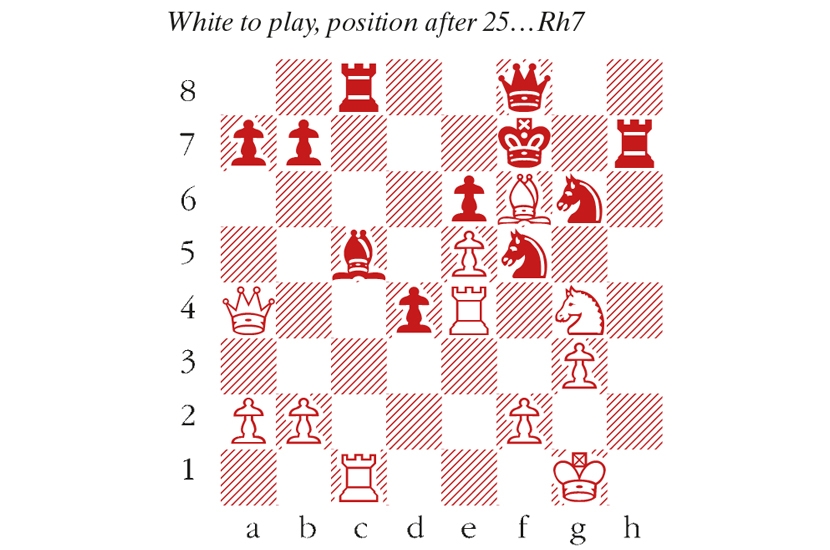If you wish to unsettle your opponents, first attack them and second, play the moves quickly. It’s far from easy to pull it off, but nobody does it better than Ian Nepomniachtchi. Among the world’s best, ‘Nepo’ stands out for his aggressive play, made all the more dangerous by marshalling an element of bluff. Are those moves coming so fast because he is still playing from memory, following his sharp opening repertoire? Has he already seen that the attack is overwhelming, and barely merits a second thought? One cannot know for sure, but Nepo is such a strong player (fourth in the world, at the last count) that one has to take him seriously. Nor does staring down a bluff promise an easy victory. His immense tactical flair gives him an uncanny knack for rescuing bad positions.
At the Magnus Carlsen Invitational tournament, held online in March, Nepomniachtchi won a wild semi-final match against Carlsen. His opponent in the final, Anish Giri, described Nepomniachtchi as ‘faster, more dangerous and sharper than Magnus… If you look only at his pluses you think he’s the best player in the world’. Giri, the more consistent and classical player, predicted a wild match, knowing all too well that Nepomniachtchi often pushes the envelope too far.
At one point, Giri needed only a draw with White to close out the match, and put up a sturdy blockade. Undeterred, Nepomniachtchi played a skilful manoeuvring game (at great speed) which levelled the scores and landed the players in a blitz playoff. This can’t have been a happy prospect for Giri, who in January lost an important blitz playoff at Wijk aan Zee against Jorden van Foreest.
The first game (shown below) saw Giri with the White pieces and what began as a Sicilian soon transposed into an Advance French. True to form, Nepo sharpened the play with his move 9…f6, gaining a mass of pawns in the centre. He followed up with an aggressive advance of his h-pawn. At that point, Giri was still in no urgent danger, so his decision to sacrifice a piece with 17 Nfe5+ was courageous. I strongly suspect that he knew it was not sound, but sensed that seizing the initiative trumped all other considerations. Sure enough, Nepo fell behind on the clock in the next few moves and made a catastrophic blunder with 25…Rh7? Giri’s convincing win with the Black pieces in the second game secured tournament victory and a $60,000 first prize.
Anish Giri–Ian Nepomniachtchi
Magnus Carlsen Invitational, March 2021
1 e4 c5 2 Nf3 e6 3 c3 d5 4 e5 Nc6 5 d4 Bd7 6 Be2 Nge7 7 Na3 cxd4 8 cxd4 Ng6 9 Nc2 f6 10 exf6 gxf6 11 O-O Bd6 12 g3 h5 13 Bd3 Nce7 14 Ne3 h4 15 Ng4 Kf7 16 Re1 Qf8 17 Nfe5+ fxe5 18 dxe5 Bc5 19 Bg5 hxg3 20 hxg3 Bc6 21 Rc1 21 Qf3+ was dangerous immediately, and after 21… Kg8 22 Bf6 the position is a mess. There is an interesting alternative in 21…Ke8. White can win Black’s queen with the sequence 22 Bxg6+ Nxg6 23 Nf6+ Kd8 24 Nh7+ Kd7 25 Nxf8 Raxf8 26 Qg2. But after 26…d4 27 Re4 Nxe5!, White would be wise to return the material: 28 Rxe5 Bxg2 29 Kxg2 with a likely draw. d4 22 Be4 Bxe4 23 Rxe4 Nf5 24 Qa4 Rc8 25 Bf6 Rh7 (see diagram) 25…Rg8 was much better. Black keeps an advantage, though the game is far from over. 26 Qd7+ Just like that, Black’s position collapses: 26…Be7 27 Rxc8 or 26…Kg8 Qxe6+ are both hopeless. Nge7 27 Bxe7 Qxe7 27…Nxe7 28 Rf4+ wins. 28 Qxc8 Bb6 29 Nf6 Rg7 30 Qh8 d3 31 Qh5+ Rg6 32 Rg4 Black resigns






Comments